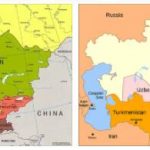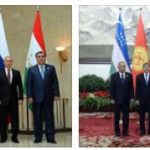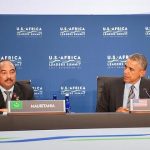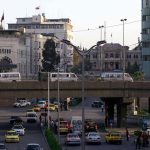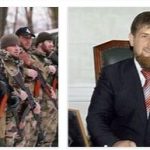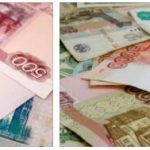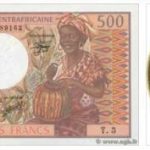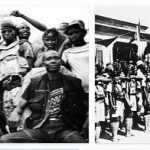5: Radicalization of Chechen separatists
Most Russian foreign fighters in Syria come from Chechnya and Dagestan in the North Caucasus. Rebels in Chechnya have been aiming for independence from Russia since 1991, much to the concern of the central government in Moscow. The first Chechen war (1994–1996) ended with the Russian authorities withdrawing troops and postponing the fate of the republics. Already during and after the first Chechen war, the Puritan, radical Islamic direction gained Wahhabism a foothold in Chechnya.
In 1997, Aslan Mashkadov was elected President of Chechnya. A faction of the rebels criticized him for not being Islamic enough, and he eventually lost control of the radicals. He therefore sought support among more radical rebels and introduced sharia law in 1998.
The rebels then attacked Russian forces in the neighboring republic of Dagestan in 1999. Along with a series of bombings against Russian apartment blocks the same year, the invasion of Dagestan is interpreted as a triggering cause of the Second Chechen War. During the run-up to the war, a picture of all Chechens as terrorists was painted in the Russian media. This image of the enemy resonated in a very brutal warfare, which most Russians saw as necessary and acceptable.
With such a backdrop, the Chechen separatists became increasingly radicalized . An uncompromising policy on the part of the Russian authorities, as well as international support from extremist groups in Afghanistan and Saudi Arabia, now led to Wahhabism gaining a stronger foothold in the North Caucasus. The separatists in the North Caucasus have thus gone from being a national liberation movement to being increasingly inspired by global jihadist movements .
6: Russian foreign fighters – Russian-language IS propaganda
Russia confirmed for the first time in 2013 that Russian citizens are fighting among jihadists in Syria. In the same year, Syrian rebels claimed that Chechens were the second largest group of foreign fighters fighting against the Assad regime . Like Uzbeks, those referred to as “Chechens” among the foreign fighters in Syria have a very varied background. Some have grown up as refugees in Western Europe, others have come from Russia via Turkey. Others are not Chechen at all; they only operate in Chechen groups. In addition, many come from other republics in the North Caucasus such as Dagestan, Ingushetia and Kabardino-Balkaria.
According to Europol , most foreign fighters from the North Caucasus come from one of two main groups:
- The Caucasus Emirate(“Imarat Kavkaz”), which was founded in 2007 and has served as an umbrella organization for various separatist and violent extremist groups in the North Caucasus. Members of this group have mainly joined what was the Nusra Front.
- A wing of ISthat was created in the North Caucasus in 2015 after several of the Caucasus emirate’s top leaders broke out and swore allegiance to IS.
Both groups now have active militants in Syria. Chechen separatists are thus divided between supporters of Imarat Kavkaz and IS. The emirate argues that President Assad in Syria is allied with the emirate’s biggest enemy – Russia. Therefore, the emirate sees it as necessary to fight against the Syrian regime.
Russian-language IS propaganda
As more Russian foreign fighters traveled to Syria in 2015, more and more of IS ‘material was published in Russian. There had been material in Russian since the end of 2012, but in 2015 IS professionalized its Russian-language propaganda. After Arabic and English, Russian is now the third most widely used language in IS. In May 2015, IS ‘ Russian-language video channel Furat Media was launched, as well as three Russian-language magazines. The goal was to recruit more warriors and spread the group’s mindset.
Through this video channel, IS declared itself established in the North Caucasus. Later, Russian-language IS propaganda has become increasingly professional. Videos are now being published with Russian-speaking IS fighters and Russian subtitles. Some videos will also contain clips from the two wars in Chechnya. In them, Muslims are encouraged to take revenge on Russia. In addition, IS has spread Russian-language material on social media (Twitter, Facebook, Vkontakte (Russian Facebook)).
7: Russian answer: move the battlefield
According to ELAINEQHO.COM, the Russian government has long cracked down on separatist and extremist groups in the North Caucasus. After the Second Chechen War, Moscow installed leaders in the republics who are loyal to the central power in the Kremlin; these use a divisive and domineering technique against their own people. Chechen President Ramzan Kadyrov is virtually free to crack down on resistance as long as he manages to keep separatists under control. But since IS launched an offensive in 2014, Russia has increasingly shifted the fight against violent extremists to areas outside the country’s borders.
Reports show that the Russian Security Service (FSB) has “helped” foreign fighters to leave Russia and travel to Syria. This happened especially before and after the Olympics in Sochi 2014. The idea is that it is easier to bomb them in Syria than in the North Caucasus. In addition, many Russian IS fighters would give Russia a pretext to enter the conflict in Syria militarily and support the Syrian government forces, as the country did in September 2015. Russia’s military intervention in Syria has made the country one of the most important players. in the Middle East, while the United States is on the sidelines. In this way, Russia’s strategy has workedt: They have brought violent extremists out of their own country, and the Russian military intervention (invited by Assad) has made Russia a powerful global player that cannot be bypassed to resolve the conflict in Syria.

